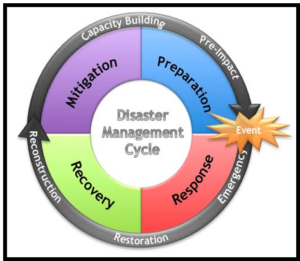BHOPAL GAS LEAK
Residents in areas surrounding the Union Carbide India Ltd. (UCIL) factory face health issues linked to contaminated groundwater.
Despite government promises, the situation remains dire, with concerns about the spread of contamination.
Source:ResearchGate
The Bhopal Gas Tragedy
- The Bhopal Gas Tragedy is a tragic example underscoring the critical importance of effective disaster management.
- In 1984, a lethal gas leak (methyl isocyanate) from the Union Carbide India Ltd. (UCIL) plant in Bhopal led to devastating consequences.
- The incident highlighted the need for robust disaster preparedness, response, and recovery strategies under the Disaster Management Act, 2005.
Persistent Problems
- Waste Disposal :Hundreds of tonnes of toxic waste dumped by UCIL from 1969 to 1984 and 11 lakh tonnes of contaminated soil remain uncleared.
- Contaminated waste: The soil contains hazardous substances, including about one tonne of mercury and nearly 150 tonnes in underground dumps.
- Inadequate Action:Authorities, despite court orders, warnings, and studies, have not cleared the toxic waste and contaminated soil.
- Insufficient funds:Government funds are recommended only for the disposal of a fraction of the waste, leaving a significant environmental hazard unaddressed.
- Water issue :
- Affected areas face challenges in accessing safe drinking water.
- Piped water supply is insufficient, and residents resort to borewell water for various purposes.
- Expert Opinions:Groundwater contamination is likely to spread if toxic waste within the factory premises is not removed.
- Conflicting Study Results:While some government studies find no groundwater contamination outside the factory, activists and experts emphasize the urgent need for attention to prevent further health hazards.
Government Initiatives:
- Over 15 years, the Madhya Pradesh government has expanded the areas receiving safe drinking water due to groundwater contamination concerns.
Hand pumps and tube wells are sealed to restrict access to contaminated water.

 Source:ResearchGate
Source:ResearchGate

